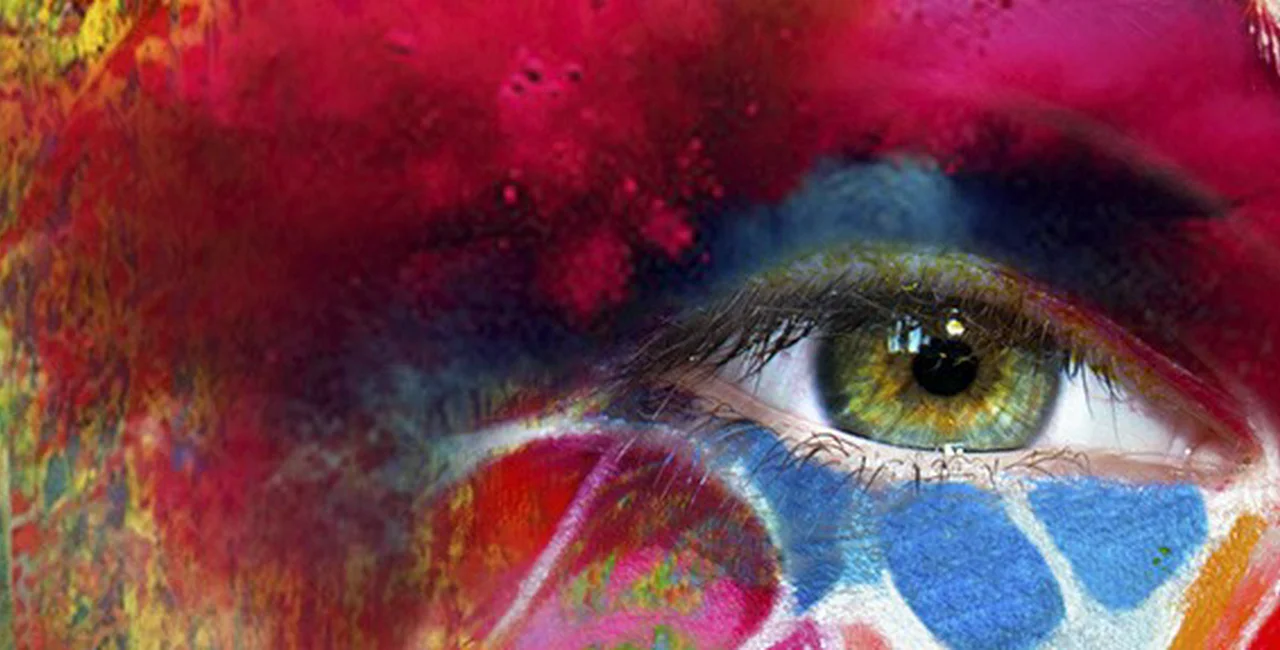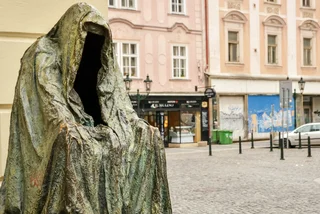Art Nouveau reached its peak around the turn of the 20th century, then began a slow decline. Nowadays, however, the influence can be seen everywhere in Prague; many buildings maintain the style and stores in the center offer various Art Nouveau products – lamps, picture frames, jewelry, and more. Moravian-born artist Alfons Mucha (1860 – 1939) is the artist whose name is most closely linked with the period of Art Nouveau. His style is still very evident in Prague, much to Prague´s benefit.
Mucha was born in Ivančice. In 1878, he applied at the Prague Academy of Fine Arts. His application was rejected, with the suggestion that he should “find another profession where you will be more useful.”
Promptly ignoring this advice, at the age of 19, he went to Vienna to work as a theatrical set painter. 1883 saw him painting murals in Emmahof Castle in Austria, on the invitation of Count Karl Khuen-Belassi, whom Mucha had met in the Moravian town of Mikulov. The count would later sponsor Mucha’s studies at the Munich Academy of Arts. In 1887, Mucha made his fateful move to Paris, where he studied at the Académie Julian, then later at the Académie Colarossi (still funded by the generous count). The money ran out in 1889 and Mucha looked for employment as an illustrator. During this time, he met artist Paul Gauguin, who was soon to depart for Tahiti. In 1893, Gauguin returned to Paris and shared a studio with Mucha in the rue de la Grande Chaumičre.
Living in Paris and struggling to make a living, Mucha came to public attention in 1894, when he was commissioned to create a poster for legendary actress Sarah Bernhardt. The actress loved the poster and “le style Mucha” finally made an impact. Mucha’s career now skyrocketed. For the next six years, he cooperated with Bernhardt on various projects. Among the posters he designed for her were La Dame aux Camelias, Lorenzaccio and Tosca. During this time, he designed stage decorations, magazine covers, furniture and posters for other clients; he even worked with the Lumičre Brothers on some of their early motion-picture experiments. Mucha was all the rage, with his distinctive influence shown on decorative panels, perfume and liquor bottle labels and even chocolate wrappers.
The years to come are a list of one triumph after another:
1896: His “Four Seasons” are published
1897: He has a showing at Paris’ Bodiniére Gallery; 107 of his works are displayed. Later that same year, 448 of his works are shown at the Salon Des Cent
1898: Mucha accepts a job teaching at the Académie Carmen
1899: The Austro-Hungarian government commissions him to work for the 1900 Paris World´s Fair; he designs the Bosnia-Herzegovina Pavilion
1900: Mucha is appointed a Knight of the Order of the Emperor Franz Joseph
1901: Mucha is awarded the Légion d’Honneur
1903 – 1904 were momentous years for Mucha. A fellow Moravian, Maruška Chytilová, became one of his students at the Académie Colarossi. In 1906, she would become his wife. In 1904, Mucha made his first visit to the United States, a country to which he would return three times. During an extended stay in New York, he painted portraits and designed more stage sets. He also visited Philadelphia and – most importantly – Chicago. In 1909, a Chicago industrialist, Charles Richard Crane, became Mucha´s sponsor for his greatest achievement, the Slav Epic, a series of 20 paintings depicting various events in the lives of the Slavic people. For this endeavor, Mucha studied the history of the Slavs extensively, questioning experts in the field to gain more information. The paintings were completed in Zbiroh Castle (which belonged to friends of his) as Mucha needed vast space to unroll his enormous canvases and work on them side-by-side. December of 1912 saw the first three canvases (six by eight meters) finished. In 1928, the finished paintings were formally shown to the City of Prague, and given to the city. The reception was less than enthusiastic; a partial exhibit, given in New York in 1921, received far more positive attention.
In 1910, Mucha returned to his homeland, which would be his residence for the rest of his life. He painted the murals for Prague’s Art Nouveau-style Municipal Building. The following year, he would begin work on his Slav Epic. In the midst of this work, in 1918, Mucha designed stamps and bank notes for the newly-independent Czechoslovakia; as the most famous artist in the country, it was only natural that he should be the one to design the new country´s first stamp. His daughter Jaroslava was used as the model for the bank notes. Ironically, it was Jaroslava who became an artist (Mucha wanted this profession for his son, Jiří). She later learned to restore paintings, and is responsible for keeping his canvases in good condition.
In 1931, he created a stained-glass window for St. Vitus’ Cathedral. This window is on the left, as you enter the building by the main entrance.
In 1939, the Gestapo arrested Mucha, still popular and known to be intensely patriotic. His health damaged by experience, he died on July 14, ten days before his 79th birthday. He is buried in Vyšehrad Cemetery. The Nazis forbade the public to attend his funeral; despite the order, more than 100,000 Czechs were present when he was laid to rest. Jiří Mucha, then studying in Paris, returned to Prague for the funeral. Jiří, as patriotic as his father, joined the RAF in 1941 and worked for the Czechoslovak government-in-exile in Britain, as well as working for the BBC. In 1962, now living again in Czechoslovakia, Jiří had the chance to send some of his father´s work to an exhibition in London. Mucha had been all but forgotten in the West, and this exhibit led to increased worldwide interest in the artist. Jiří also wrote a biography of his father, Alphonse Mucha: His Life and Art.
The small town of Moravský Krumlov, in Moravia, holds the honor of displaying the Slav Epic in the local castle. The exhibit is open to the public from April to October, every day except Mondays. Those who don´t want to make the trek to Moravia can always visit the Mucha Museum in Prague 1 (Panská 7,), with a collection of more than 100 exhibits. It´s open daily, 10 am to 6 pm.













 Reading time: 5 minutes
Reading time: 5 minutes 























